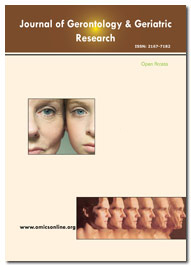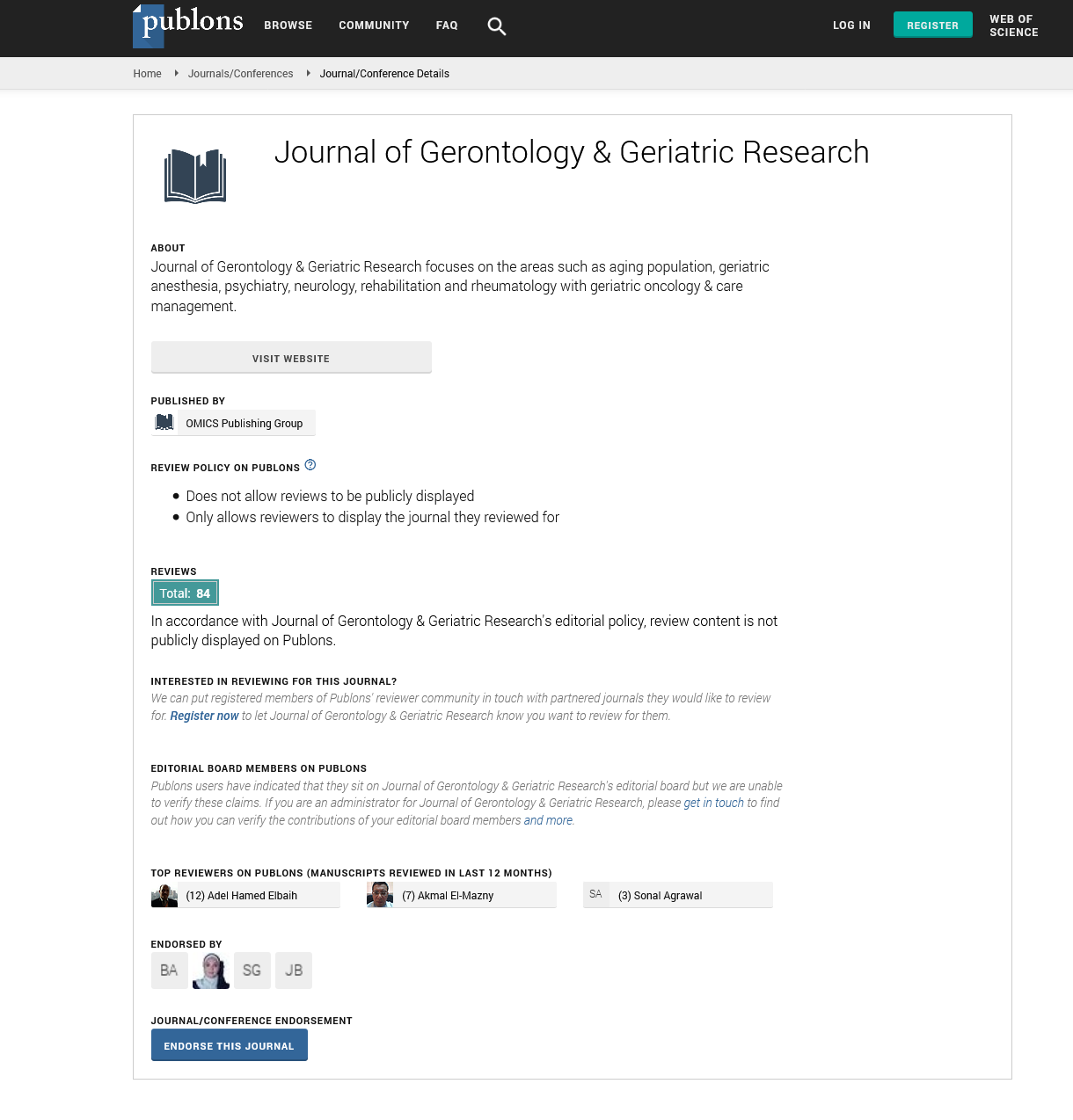Indexed In
- Open J Gate
- Genamics JournalSeek
- SafetyLit
- RefSeek
- Hamdard University
- EBSCO A-Z
- OCLC- WorldCat
- Publons
- Geneva Foundation for Medical Education and Research
- Euro Pub
- Google Scholar
Useful Links
Share This Page
Journal Flyer

Open Access Journals
- Agri and Aquaculture
- Biochemistry
- Bioinformatics & Systems Biology
- Business & Management
- Chemistry
- Clinical Sciences
- Engineering
- Food & Nutrition
- General Science
- Genetics & Molecular Biology
- Immunology & Microbiology
- Medical Sciences
- Neuroscience & Psychology
- Nursing & Health Care
- Pharmaceutical Sciences
Opinion - (2024) Volume 13, Issue 6
Neuroinflammatory Signaling in Alzheimer's: A Key Contributor to Disease Progression
Daniel Abraham**Received: 04-Dec-2024, Manuscript No. jggr-25-28288; Editor assigned: 06-Dec-2024, Pre QC No. P-28288; Reviewed: 18-Dec-2024, QC No. Q-28288; Revised: 24-Dec-2024, Manuscript No. R-28288; Published: 31-Dec-2024, DOI: 10.35248/2167-7182.2024.13.766
INTRODUCTION
Alzheimer's Disease (AD) is a progressive neurodegenerative disorder characterized by cognitive decline, memory impairment, and eventually, a loss of independence in affected individuals. While the exact ethology of Alzheimer's disease remains incompletely understood, research has increasingly implicated neuroinflammation as a key player in the disease's pathogenesis. Neuroinflammation refers to the activation of the brain's immune response in response to various insults, such as protein aggregates like beta-amyloid plaques and tau tangles. This article delves into the intricate neuroinflammatory pathways in Alzheimer's disease, highlighting the contributing factors, mechanisms, and potential therapeutic implications [1,2].
DESCRIPTION
Microglia, the resident immune cells of the central nervous system, play a central role in neuroinflammation. In healthy conditions, microglia survey their environment, maintaining neuronal health. In Alzheimer's, microglia become chronically activated due to the presence of betaamyloid plaques and tau tangles. While initially aiming to clear these protein aggregates, activated microglia release pro-inflammatory cytokines and reactive oxygen species, which can exacerbate neuronal damage. Dysfunctional microglia is also less capable of efficiently clearing protein aggregates, perpetuating the cycle of neuroinflammation. Astrocytes, another type of glial cell, are intimately involved in maintaining the brain's homeostasis. In Alzheimer's disease, astrocytes become reactive, undergoing astrogliosis. Reactive astrocytes release cytokines, chemokines, and growth factors that influence the surrounding environment. Moreover, they contribute to the formation of the neuroinflammatory environment, promoting neuroinflammation through bidirectional signalling with microglia. This glial crosstalk creates a selfamplifying loop of inflammation, further impacting neuronal function. The integrity of the Blood-Brain Barrier (BBB) is compromised in Alzheimer's disease. As neuroinflammation progresses, pro-inflammatory mediators can disrupt the BBB, allowing immune cells and molecules to infiltrate the brain. This influx exacerbates inflammation and contributes to neuronal damage. Conversely, the BBB dysfunction hampers the removal of toxic substances, including protein aggregates, from the brain, thus perpetuating the disease process. Genetics play a substantial role in Alzheimer's disease risk. Variants of genes related to the immune response, such as the Apolipoprotein E (APOE) gene, have been linked to increased susceptibility to the disease. APOE, in its ε4 isoform, is associated with a higher risk of developing Alzheimer's and exacerbates neuroinflammation. Other immune-related genes, like TREM2, are also implicated in microglial function and AD pathology. Understanding the neuroinflammatory pathways in Alzheimer's disease opens doors for potential therapeutic interventions. Modulating neuroinflammation remains a promising strategy, with approaches including anti-inflammatory drugs, microgliatargeted therapies, and immunomodulatory agents. Clinical trials targeting specific inflammatory pathways, like IL-1 and TNF-, are underway. Additionally, lifestyle modifications, such as diet and exercise, may indirectly influence neuroinflammation [3-5]. Neuroinflammation in Alzheimer's disease is a complex phenomenon involving multiple cell types, signaling molecules, and genetic factors. The interplay between protein aggregates, immune responses, and glial cells creates a self-sustaining cycle of inflammation that contributes to neuronal damage and disease progression. Developing targeted therapeutic strategies to modulate neuroinflammation holds promise for slowing down the trajectory of Alzheimer's disease. However, more research is needed to fully understand the intricacies of these neuroinflammatory pathways and to translate this knowledge into effective treatments for this devastating disorder.
REFERENCES
1. Cerquera-Jaramillo MA, Nava-Mesa MO, González-Reyes RE, Tellez-Conti C, de-la-Torre A. Visual features in Alzheimer’s disease: From basic mechanisms to clinical overview. Neural Plats 2018; 2018.
2. Benchoua A, Trioulier Y, Zala D, Gaillard MC, Lefort N, Dufour N, et al. Involvement of mitochondrial complex II defects in neuronal death produced by N-terminus fragment of mutated huntingtin. Mol Biol Cell 2006; 17:1652- 1663.
Citation: Abraham D (2024) Neuroinflammatory Signaling in Alzheimer's: A Key Contributor to Disease Progression. J Gerontol Geriatr Res.13: 766.
Copyright: © 2024 Abraham D. This is an open-access article distributed under the terms of the Creative Commons Attribution License, which permits unrestricted use, distribution, and reproduction in any medium, provided the original author and source are credited.

